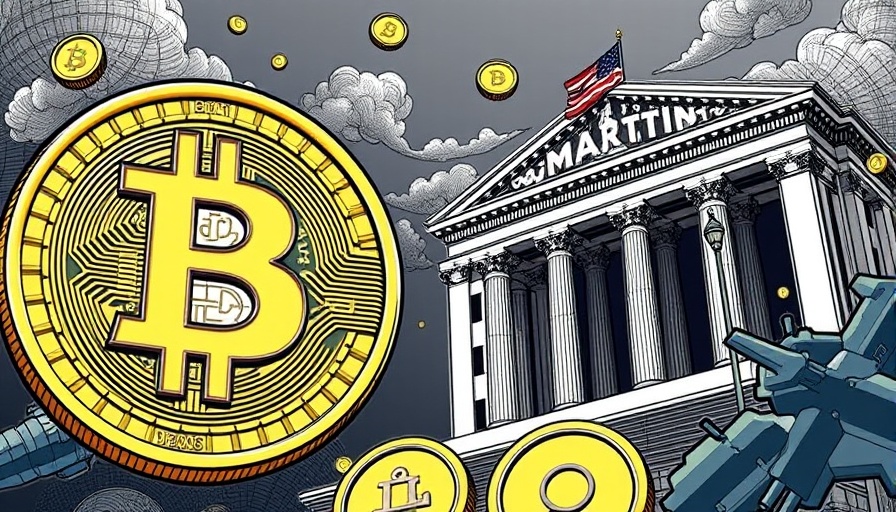
Marti Technologies Takes a Bold Step into Bitcoin Investments
In a surprising move for the Turkish mobility super app, Marti Technologies Inc. (NYSE:MRT) announced its intention to allocate approximately 20% of its cash reserves into Bitcoin. This strategic pivot aims to position the company at the forefront of the digital asset market, but the immediate reaction in the stock market was a 6.7% drop in its share value. As market analysts often warn, the integration of cryptocurrencies into traditional business models requires a careful balance of opportunity and volatility.
Understanding the Shift: Why Bitcoin?
Marti's CEO, Oguz Alper Oktem, stated, "Our decision to allocate capital to crypto assets acknowledges our belief that Bitcoin and other digital assets have proven their ability to store value alongside hard currencies and gold over the last several years." This sentiment reflects a growing understanding among investors that cryptocurrencies may serve as a hedge against traditional economic fluctuations. In the current landscape of inflation and economic uncertainty, such an assertion resonates with various investment strategies, especially among those skimming the surface of crypto investing.
The Broader Impact on the Stock Market
This announcement comes amid a wave of companies exploring crypto asset integration, which begs the question: Is the stock market prepared for this shift? While some analysts view Marti's boldness as innovative, others are concerned about the inherent volatility of cryptocurrencies. The risk management involved in balancing between traditional assets like real estate or bonds, and modern leverage such as cryptocurrencies is substantial. Investors are left wondering how best to approach their portfolios during this ongoing transition.
Future Trends: How Will Companies Adapt?
The decision by Marti to eventually increase its crypto asset holdings to 50% of cash reserves indicates a trend where digital assets could evolve from speculative investments to fundamental assets for companies. If successful, more businesses might follow suit, leading to increased portfolio diversification through alternative investments. However, achieving a stable framework that ensures both regulatory compliance and investor confidence remains a key challenge.
Exploring the Risks Involved
Investors must contemplate the risks associated with Marti's announcement. With cryptocurrencies experiencing significant price fluctuations, the long-term impacts could prove detrimental or beneficial to stock performance. Should other companies in the mobility sector consider similar strategies, the interconnectedness of their stocks could amplify the impact of crypto market changes across the board.
Cryptocurrency Regulations: A Must for Sustainability
As Marti commits to institutional-grade custodians for their digital assets, the emphasis on regulatory compliance cannot be overstated. The governing bodies across the globe are yet to establish a consistent framework for cryptocurrencies, which may create challenges for companies attempting to enter this landscape. Investors should remain aware of differing regulations, which could impact the volatility and potential gains of cryptocurrencies over time.
The Takeaway: Is It Time for Caution or Confidence?
As the dust settles on Marti's announcement, investors are left grappling with the prospect of integrating cryptocurrencies into their broader investment strategies. While innovative approaches like Marti's may reflect an evolving financial landscape, caution is advised. Understanding risk tolerance, and aligning it with an informed view on cryptocurrency investment strategies will be crucial for any serious investor moving forward.
Stay informed and approach your investment strategies conservatively, especially in this fast-evolving domain.
 Add Row
Add Row  Add
Add 



Write A Comment